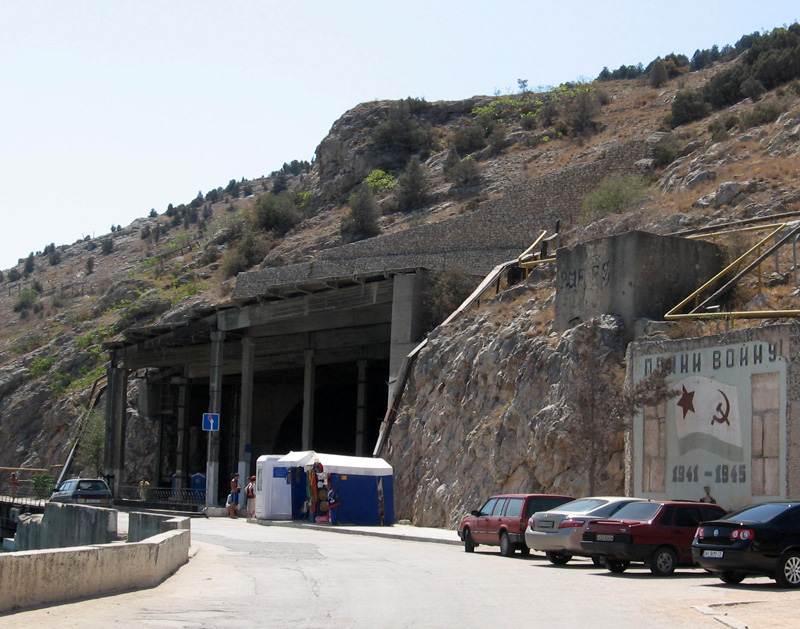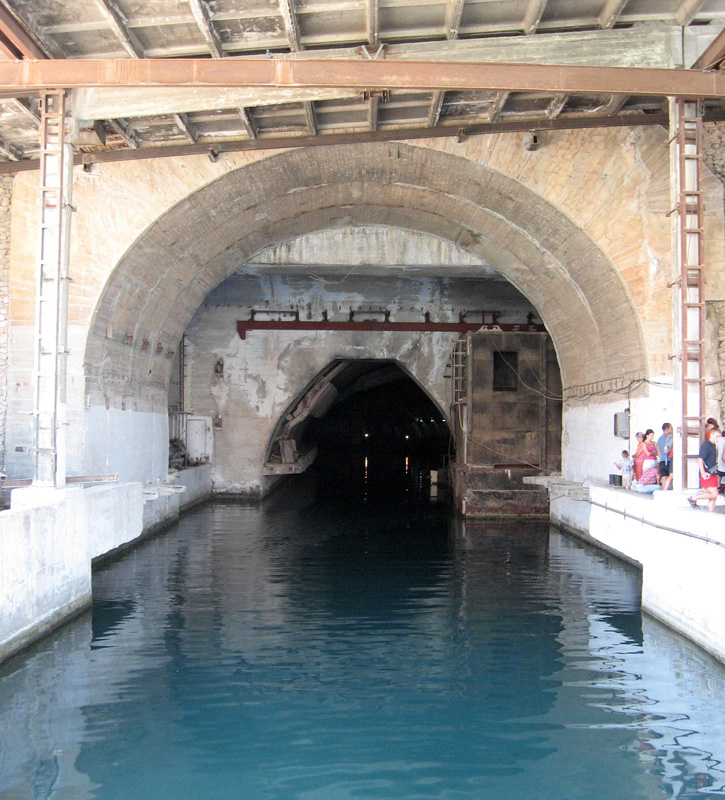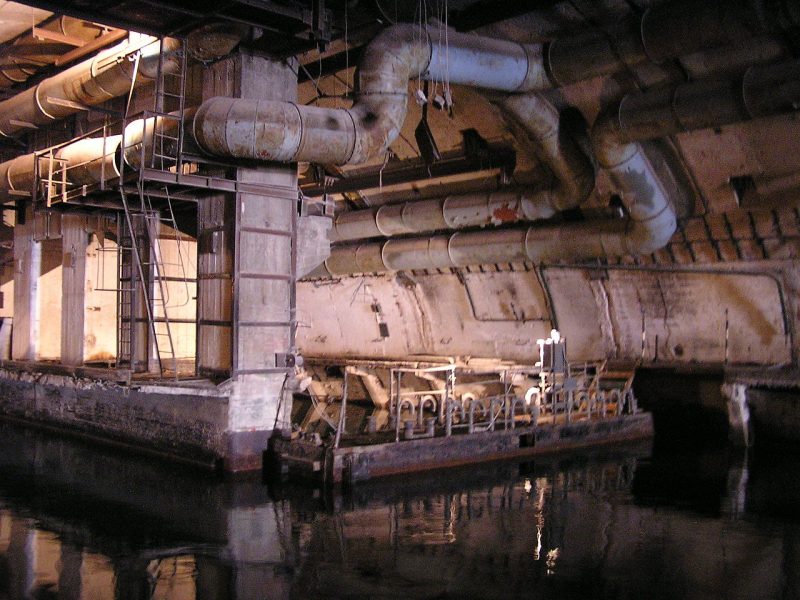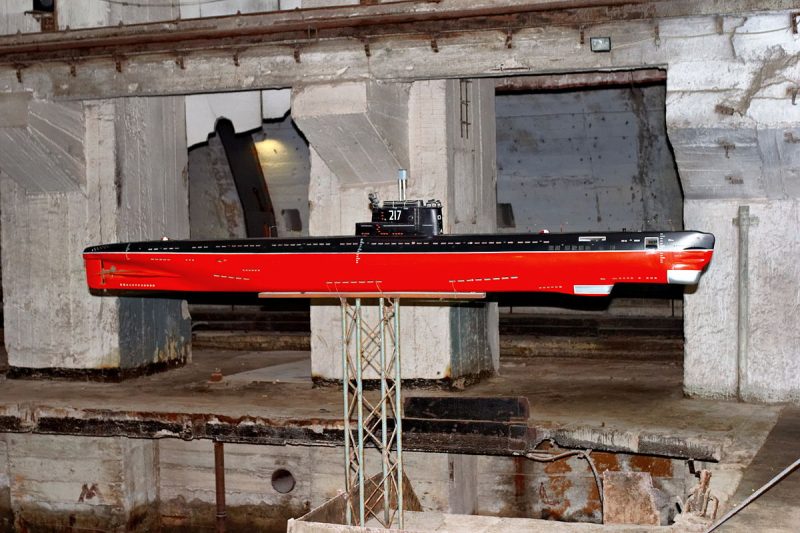Naval museum complex Balaklava (Ukrainian: “Балаклава”) is an underground submarine base in Balaklava, Crimea, Russia/Ukraine. Originally known as Object 825 GTS, it was a top-secret military facility during the Cold War, located in Balaklava bay. Today it serves as a museum and also houses a museum about the Crimean War.

It was claimed that the submarine base in Balaklava was virtually indestructible – it was protected by a shell of concrete and steel, capable of surviving a direct nuclear strike of up to 100 kilotons. The object includes a combined underground water channel with a dry dock, repair shops, warehouses for storage of torpedoes and other weapons.

Additionally, it could house personnel to protect them from nuclear fallout. Located in the mountain Tavros, on both sides of which there are exits. If necessary, it overrides caisson, which ash air and floated up. The exit to the open sea was equipped with a release on the northern side of the mountain. The holes in the rock are neatly covered with camouflage devices and networks.

A 155 Brigade of submarines was formed for the repair and maintenance of the submarines, as well as for the storage of ammunition for these submarines. In the central tunnel (length 602 metres) the facility could accommodate 7 subs if necessary, and in all the galleries up to 14 submarines of different classes.
In the period after the Second World War, the two superpowers – the USSR and the U.S. – stepped up their nuclear arsenal, threatening each other pre-emptive strikes and retaliatory strikes. It was then that Joseph Stalin gave Lavrentiy Beria a secret directive: to find a place where they could base submarines for a retaliatory nuclear strike. The town of Balaklava was chosen and immediately designated as a classified location, and the bay, which is not visible from the open sea, became the submarine base Stalin wanted.

Between 1957 and 1961 an underground complex was built, requiring the removal of an estimated 120 tons of rock, an activity which was carried out at night by barges that dumped the rock in the open sea. The base remained operational after the collapse of the Soviet Union in 1991 until 1993 when the decommissioning process started. Almost the entire population of Balaklava at one time worked at the base; even family members could not visit the town of Balaklava without a good reason and proper identification.

In 1996, the last Russian submarine left the base. When the site was abandoned the remaining content was completely stolen, only the doors were too heavy to be taken away, despite the high value of their alloy. The museum was equipped with military equipment which was purchased from other sites for this purpose.

The museum, officially denoted the ‘Balaklava Naval Museum Complex’, was founded by Ukraine’s Ministry of Defence on 30th December 2002. Opened to the public on 1st June the following year, the museum plan included portions of the 600-metre central tunnel as well as a weapons plant, an (empty) nuclear storage arsenal and a number of residential quarters and offices.
